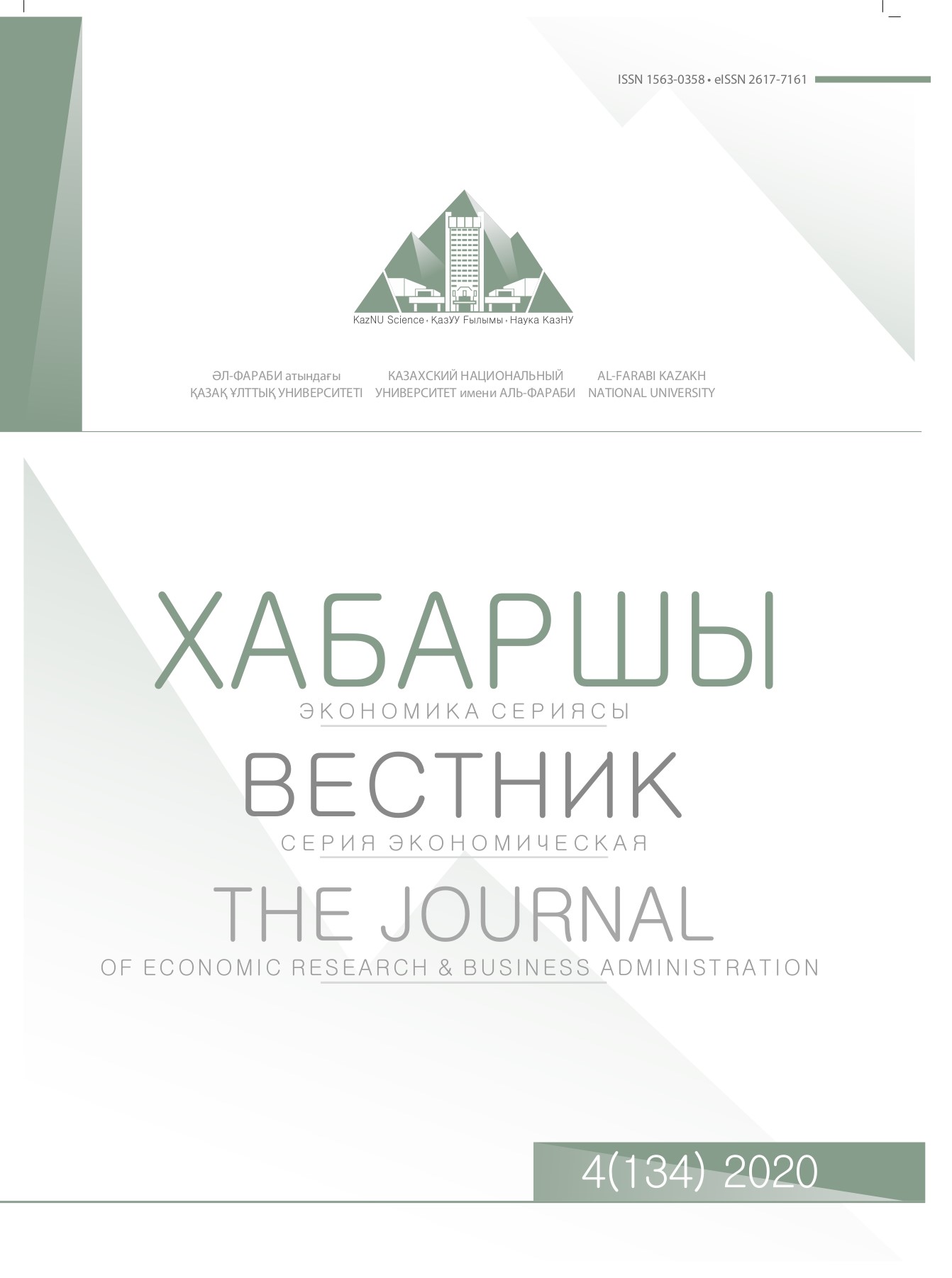Влияние доступа к ИКТ на региональный экономический рост в Казахстане
DOI:
https://doi.org/10.26577/be.2020.v134.i4.09Аннотация
В данной статье рассматривается влияние доступа информационно-коммуникационных
технологий (ИКТ) в организациях на региональный экономический рост в Казахстане.
Основной задачей исследования является сравнение регионов с высоким, средним и низким
уровнями регионального развития. Были собраны данные за период 2007-2018 гг. по всем 16
регионам страны. Доступ в интернет в организациях, количество компьютеров и стационарных
телефонов рассматривались как ИКТ, а основным показателем развития регионов был взят
валовой региональный продукт (ВРП) регионов Казахстана. POLS (pooled ordinary least squared)
– объединенный метод наименьших квадратов (для панельных исследовании), FE (fixed effects)
– метод с фиксированными эффектами, RE (random effects) – метод со случайными эффектами
и IV (instrumental variables) – метод с инструментальными переменными были применены для
создания регрессионной модели с высокой надежностью. Инновационная деятельность региона
для количества компьютеров в организациях была принята как инструментальная переменная.
В статье представлены результаты регрессионной модели с разделением регионов с высоким,
средним и низким развитием и их анализ. Кроме того, были показаны результаты для разбиения
на подпериоды 2007-2013 и 2014-2018 годов. Значительного различия между групп регионов
Казахстана не было выявлено в результате данного исследования.




